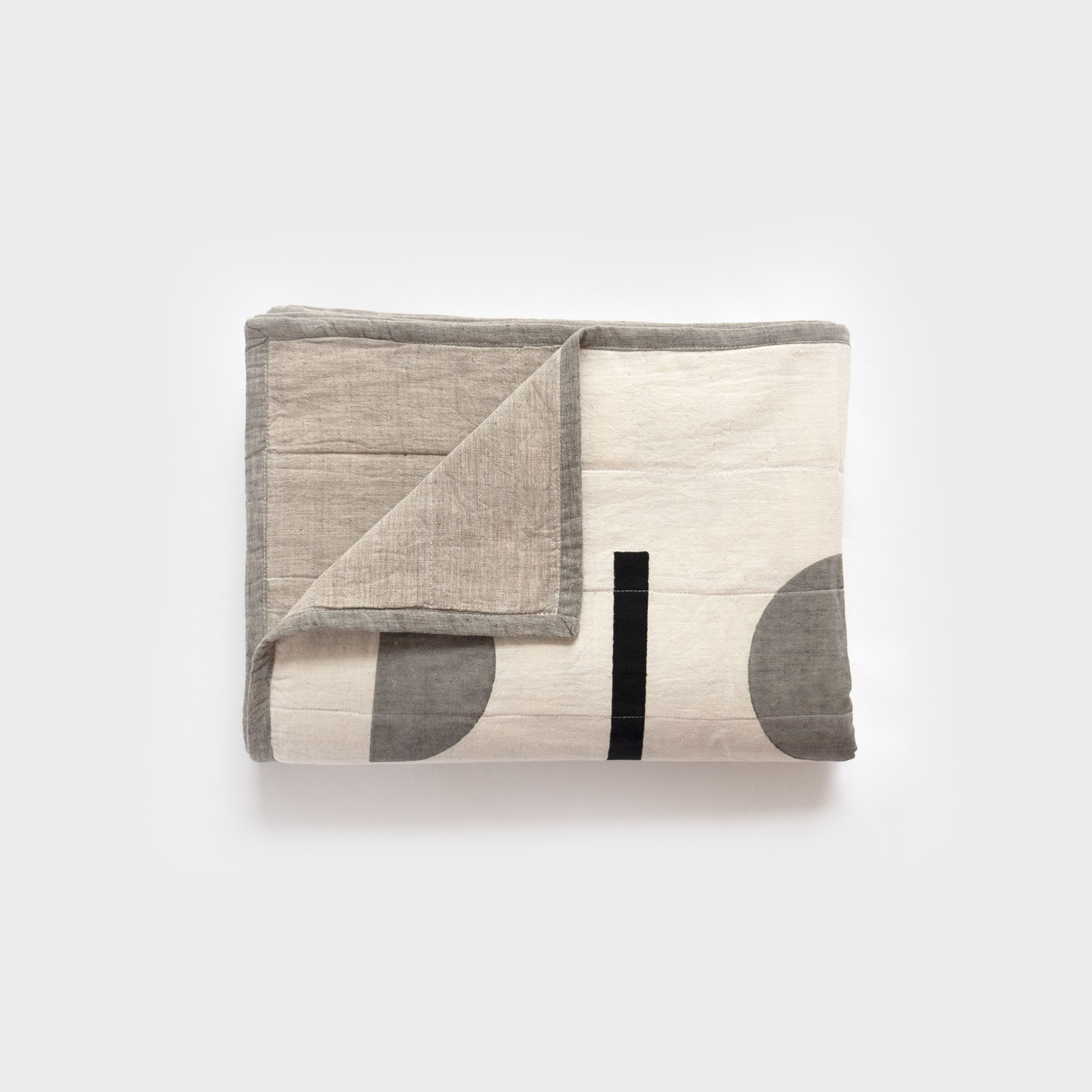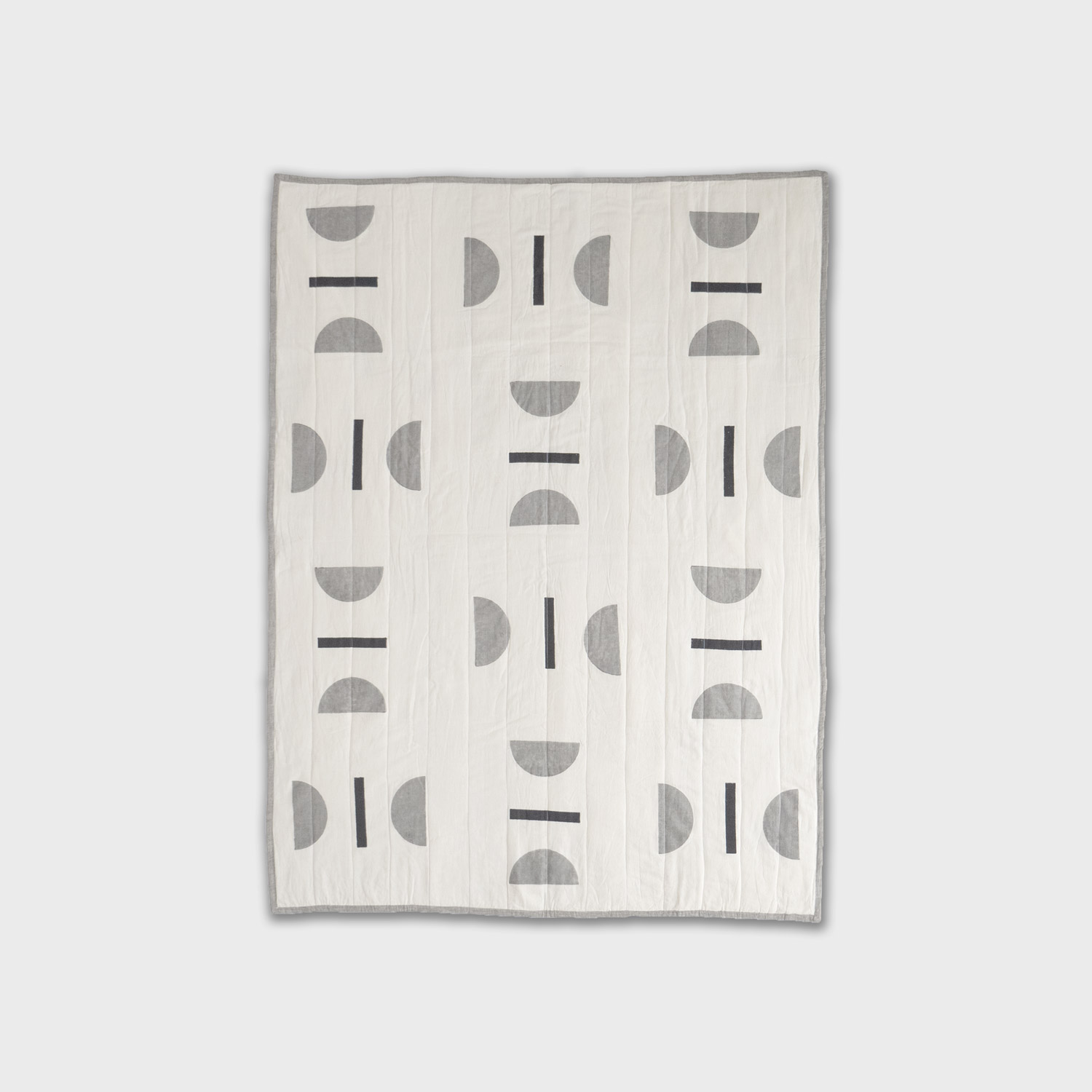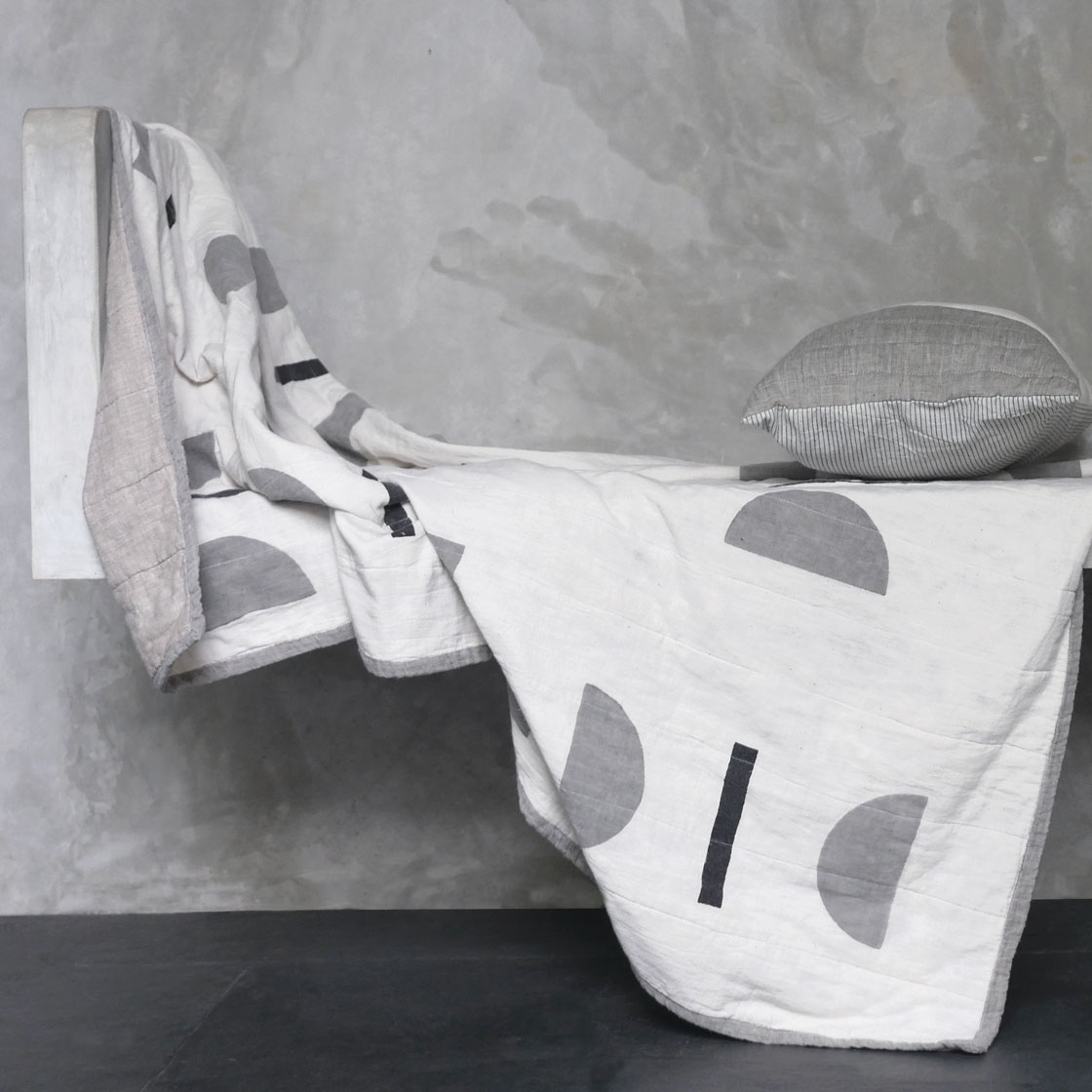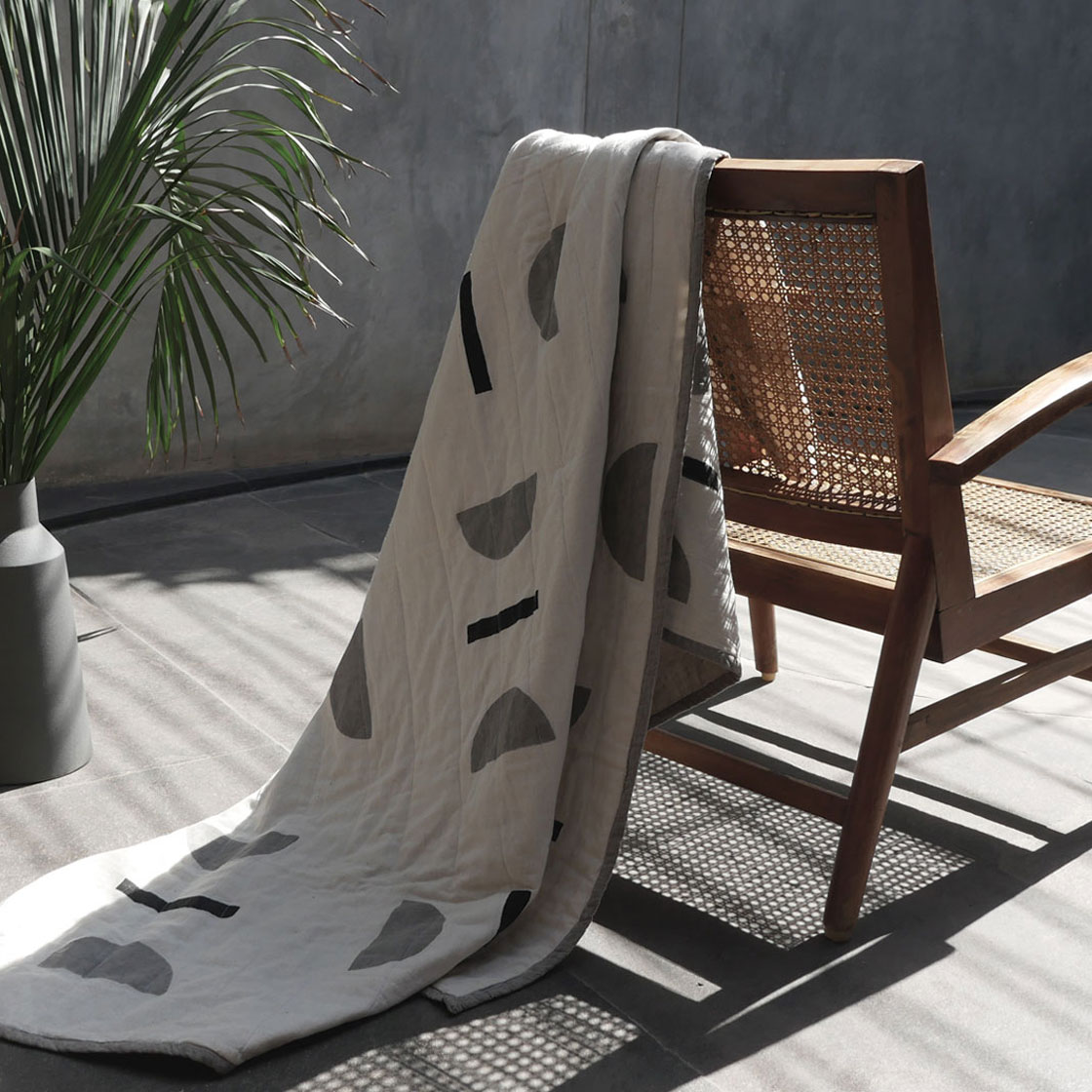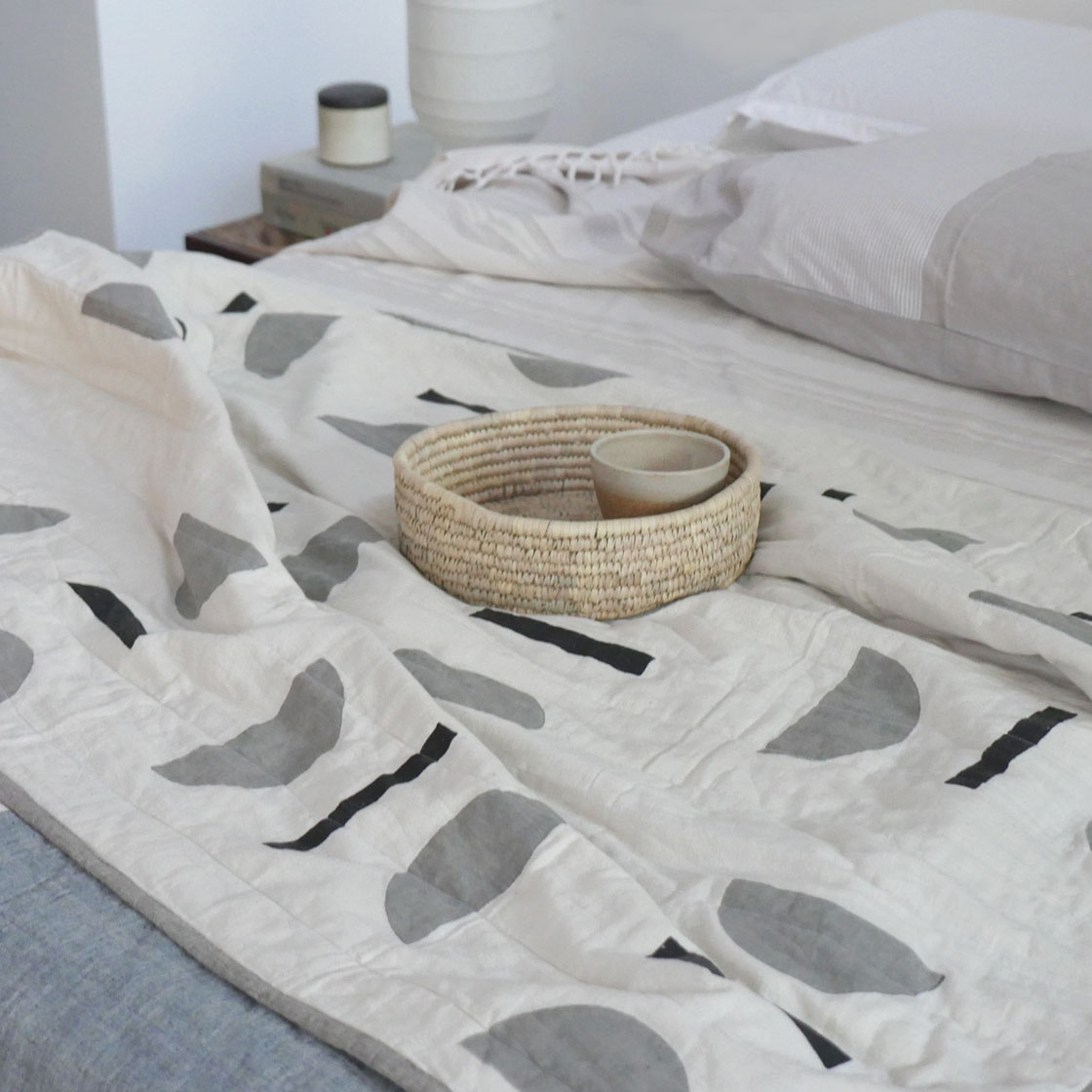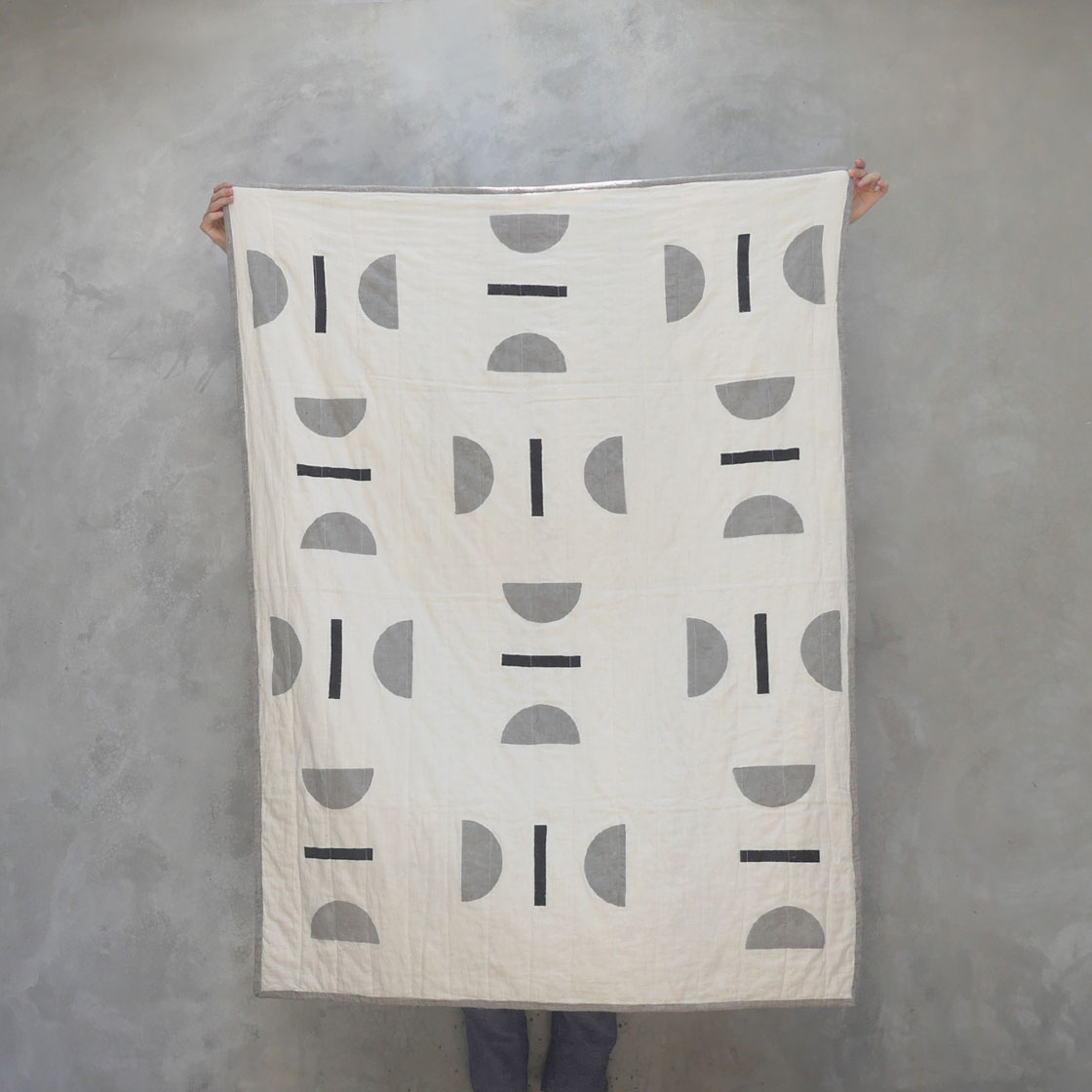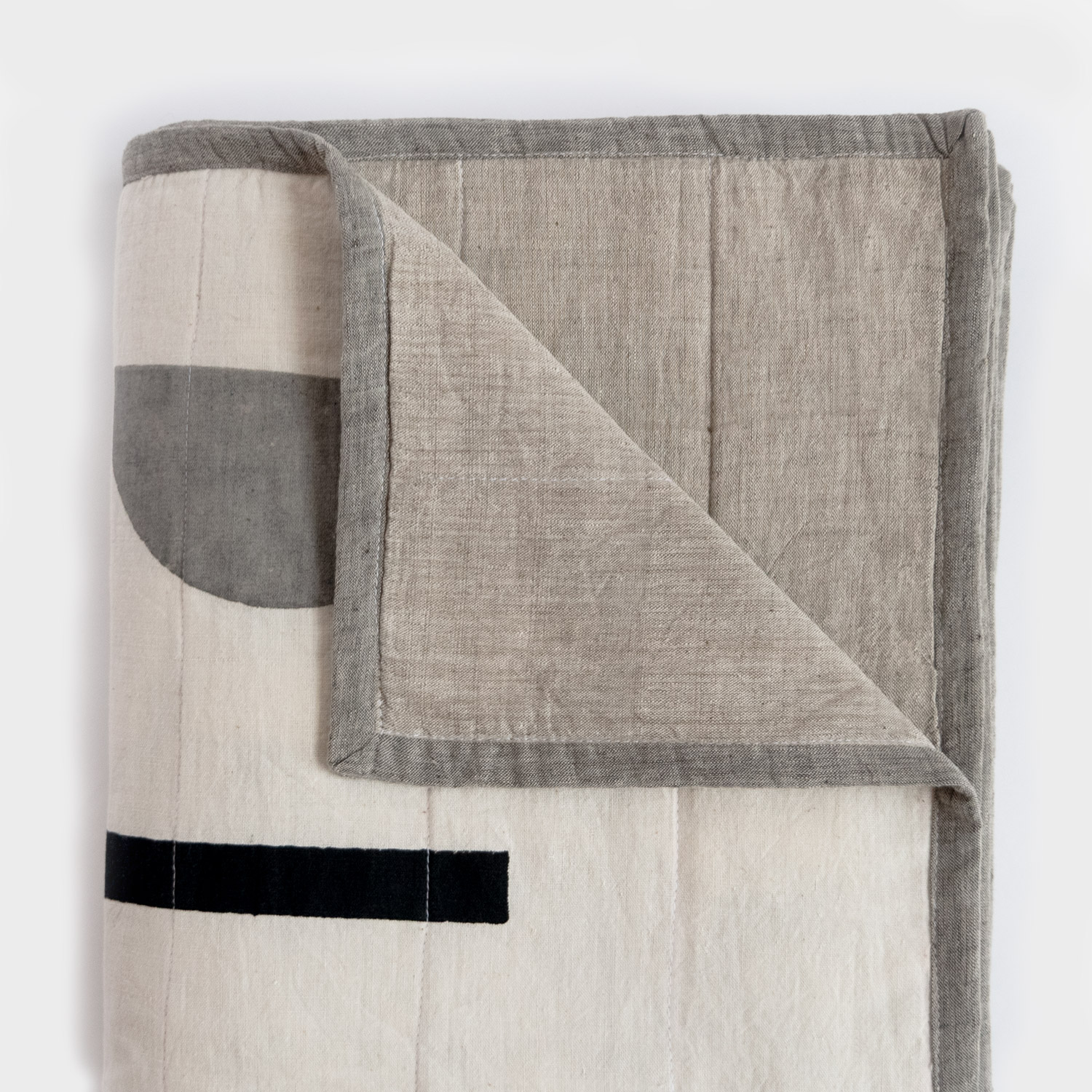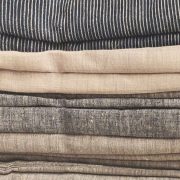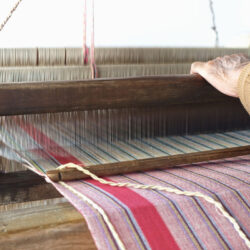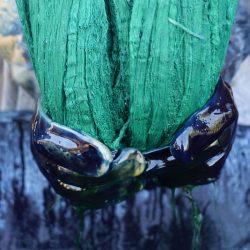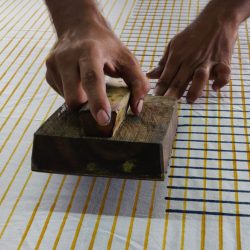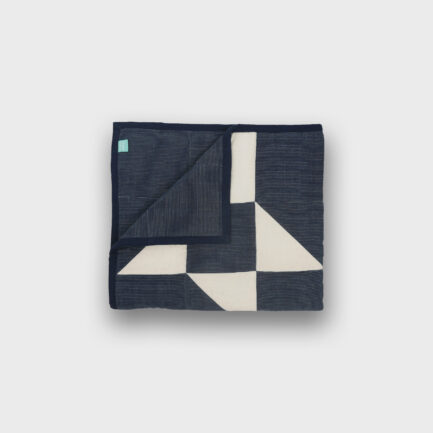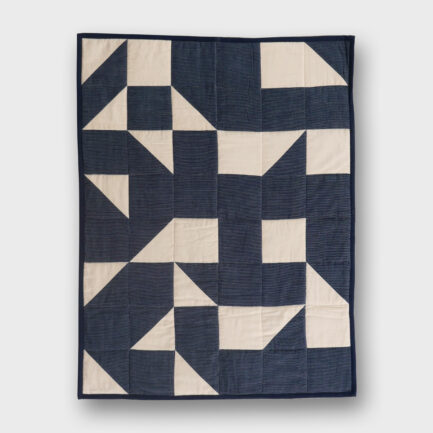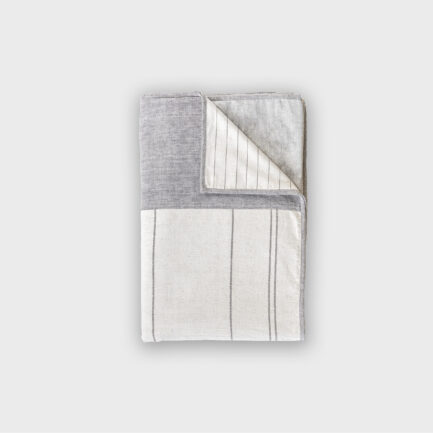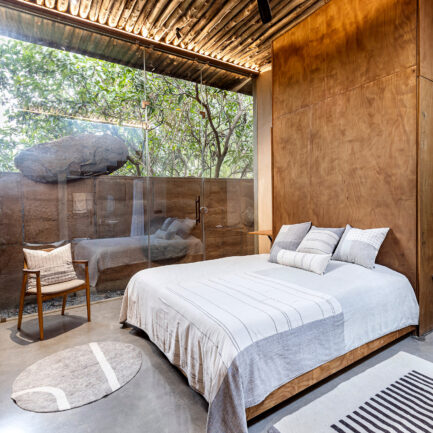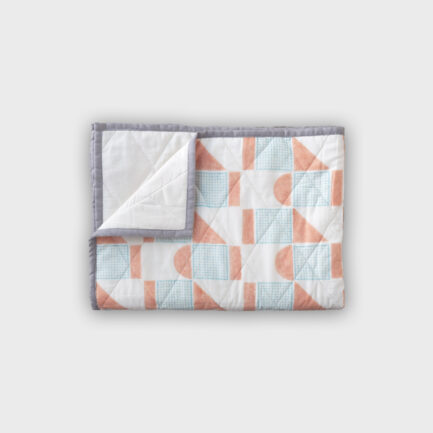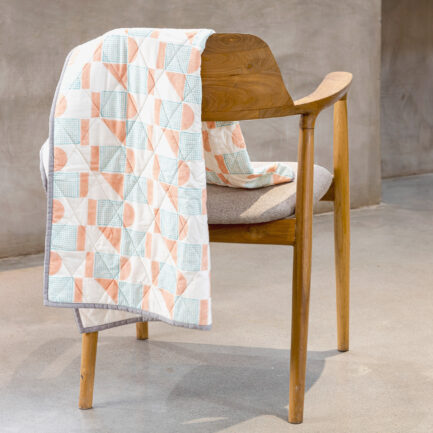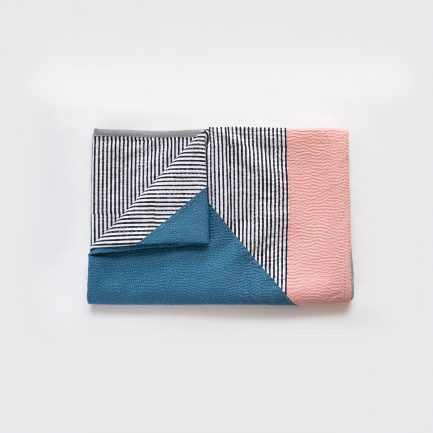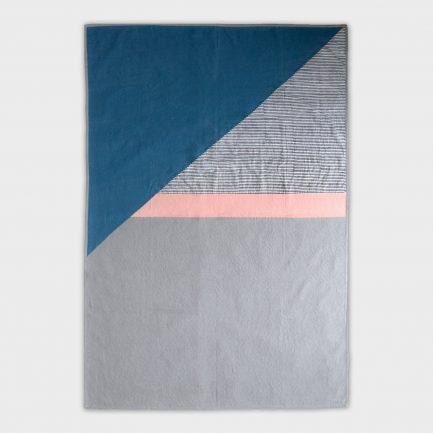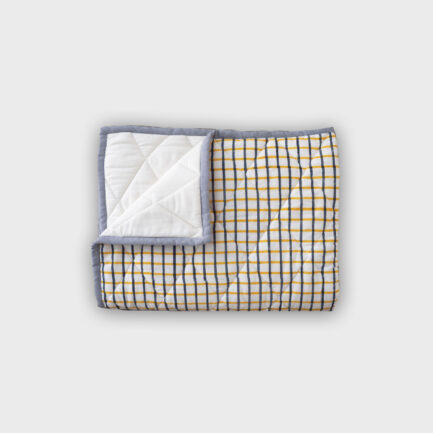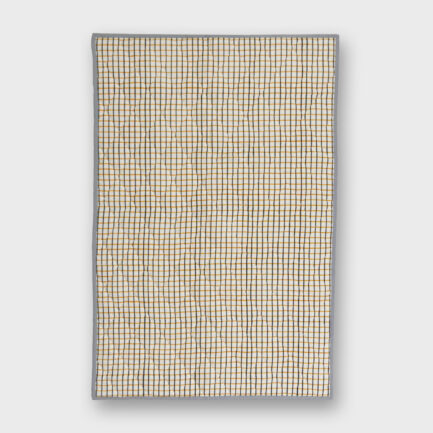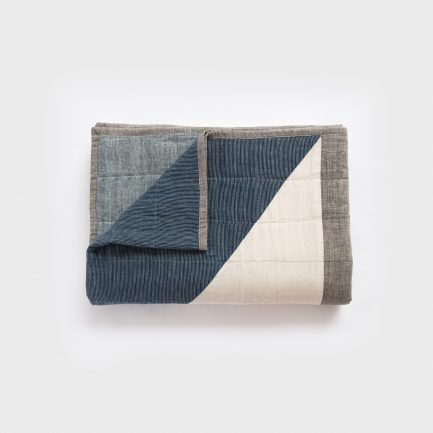- Hand block printed with AZO-free, non-toxic dyes
- Approx. 114 x 152cm / 45 × 60” (sizes may vary slightly)
- Top: Natural handwoven cotton
- Back: Naturally dyed, handwoven cotton
- Binding: Naturally dyed, handwoven cotton
- Filling: 100% cotton batting
- Machine pieced, quilted and bound in our workshop in Chennai
Nila Mini Quilt
The Nila (Tamil for moon) Quilt was inspired by grill patterns found around the streets of Madras.
Made from airy handwoven cotton, the Nila quilt is soft and soothing to the eye. The back and binding have been naturally dyed with pomegranate skins, myrobalan galls and fermented jaggery. The front has been left un-dyed and unprocessed to retain the natural, creamy colour of cotton lint. This raw surface is then carefully hand block printed by a team of expert printers based here in South India.
The Nila quilt works well as a chair or sofa blanket, it can also be draped over the foot of a bed or used as a cosy baby blanket.
We value honesty in materials and processes. We believe in expressing the natural character of a material and celebrating the means of its construction. Irregularities or variations in print, colour, weave and texture are subtle reminders that your product has been made by hand and is one of a kind.
₹7,000.00
In stock
Naturally Dyed Handwoven Cotton
Pure cotton cloth made directly from raw cotton. The process involves using small-scale yarn-making units that have been designed to make yarn specifically for handlooms. The yarn is dyed naturally using plant-based dyestuffs, then hand woven into cloth. The lack of heavy and intense industrial processing results in a wonderfully textured fabric that is soft, absorbent and drapes beautifully.
Handloom Weaving
Handwoven fabrics are soft, durable and breathable – many of these properties are due to the human handling of the yarn during the weaving process. Looms are operated and powered by hand or foot, so no electricity is required to make the cloth, resulting in the process being ecologically sound.
Natural Dyeing
This ancient technique involves obtaining pigment or dye from plants, insects or minerals. The majority of natural dyes come from roots, flowers, berries, seeds, nuts, leaves, and bark. We are drawn to natural dyes because they can produce far richer, more complex shades than synthetic dyes. Colours tend to have great depth and are very soothing to the eye.
Block Printing
Block printing is one of the oldest forms of textile printing. It can be a slow and laborious process that requires a great deal of skill and precision. The technique involves using carved wooden blocks to imprint a design onto fabric by hand.
| Weight | 0.54 kg |
|---|---|
| Dimensions | 114 × 152 cm |
| Colours | Grey, Natural, Olive Grey |
| Materials | Handwoven Cotton |
| Craft Processes | Block Printing, Handloom Weaving, Natural Dyeing |

